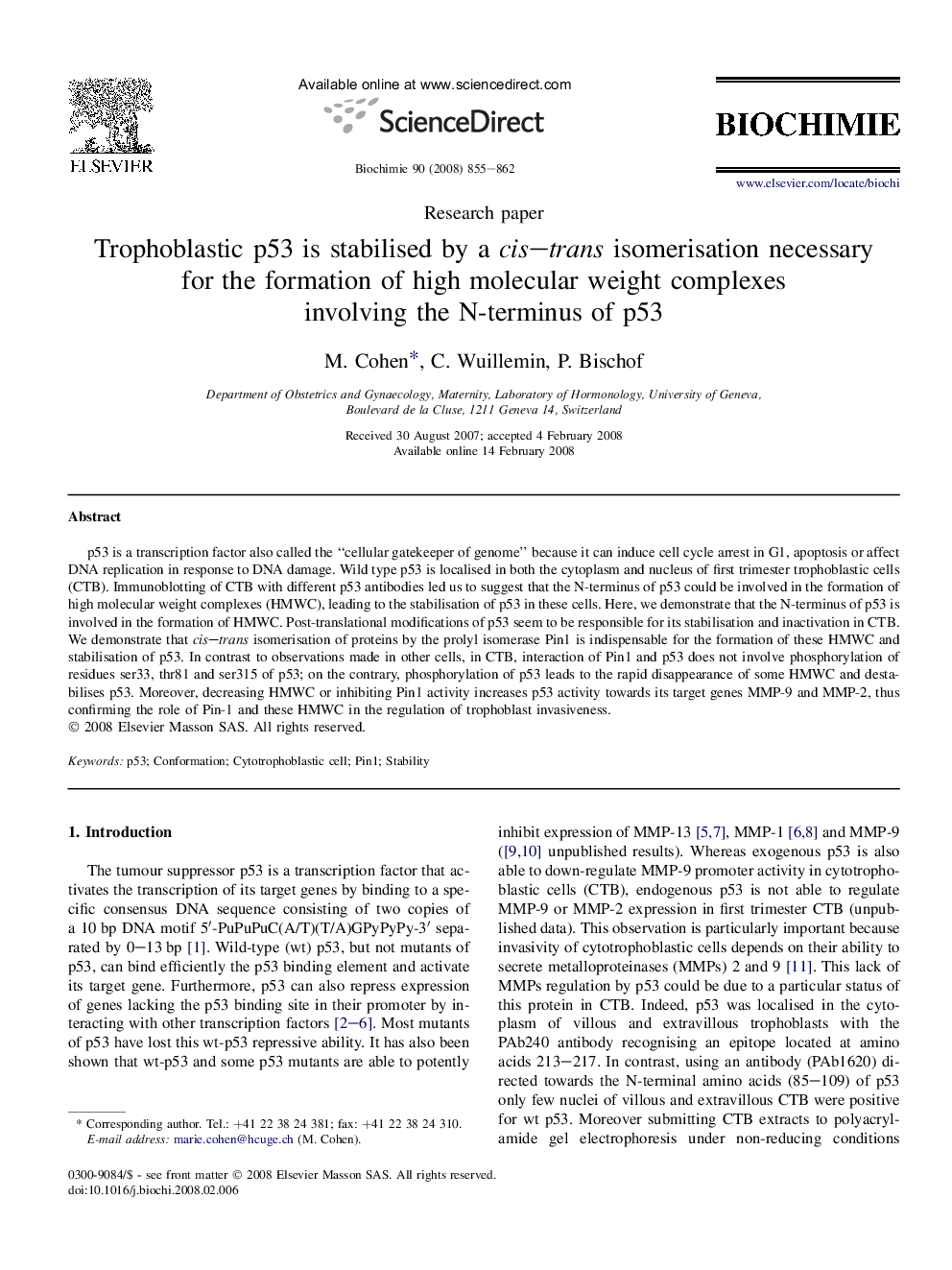| Article ID | Journal | Published Year | Pages | File Type |
|---|---|---|---|---|
| 1953308 | Biochimie | 2008 | 8 Pages |
Abstract
p53 is a transcription factor also called the “cellular gatekeeper of genome” because it can induce cell cycle arrest in G1, apoptosis or affect DNA replication in response to DNA damage. Wild type p53 is localised in both the cytoplasm and nucleus of first trimester trophoblastic cells (CTB). Immunoblotting of CTB with different p53 antibodies led us to suggest that the N-terminus of p53 could be involved in the formation of high molecular weight complexes (HMWC), leading to the stabilisation of p53 in these cells. Here, we demonstrate that the N-terminus of p53 is involved in the formation of HMWC. Post-translational modifications of p53 seem to be responsible for its stabilisation and inactivation in CTB. We demonstrate that cis-trans isomerisation of proteins by the prolyl isomerase Pin1 is indispensable for the formation of these HMWC and stabilisation of p53. In contrast to observations made in other cells, in CTB, interaction of Pin1 and p53 does not involve phosphorylation of residues ser33, thr81 and ser315 of p53; on the contrary, phosphorylation of p53 leads to the rapid disappearance of some HMWC and destabilises p53. Moreover, decreasing HMWC or inhibiting Pin1 activity increases p53 activity towards its target genes MMP-9 and MMP-2, thus confirming the role of Pin-1 and these HMWC in the regulation of trophoblast invasiveness.
Keywords
Related Topics
Life Sciences
Biochemistry, Genetics and Molecular Biology
Biochemistry
Authors
M. Cohen, C. Wuillemin, P. Bischof,
